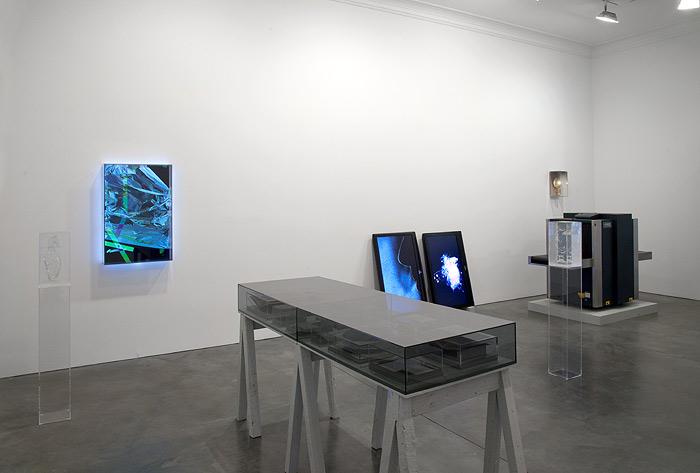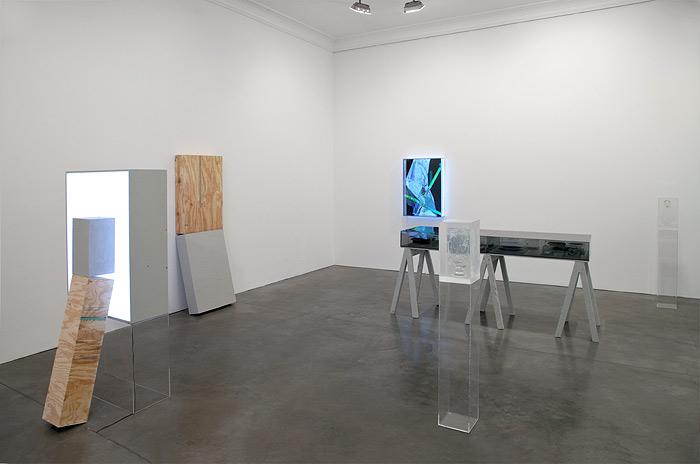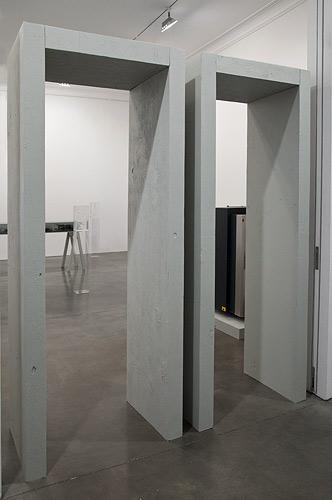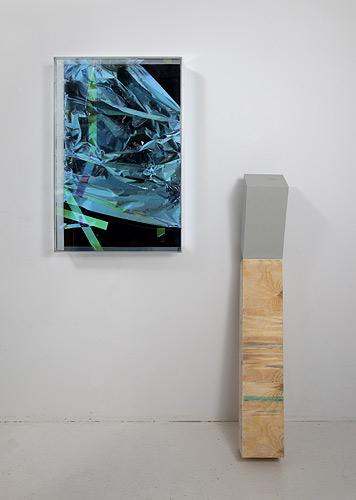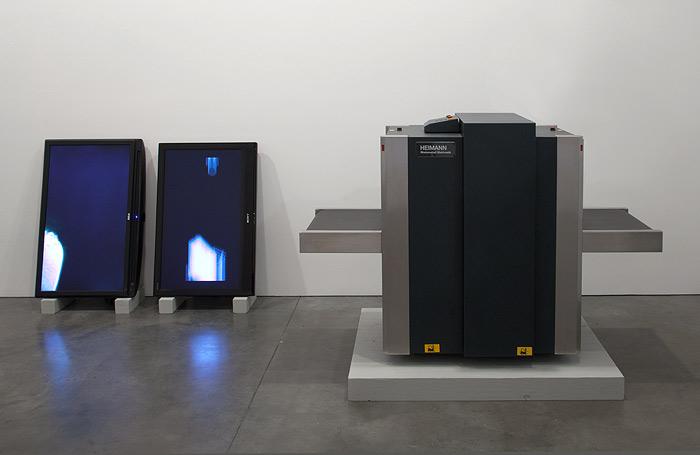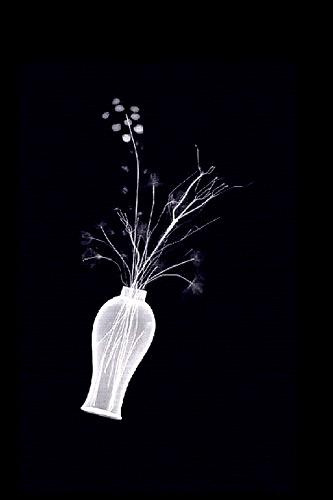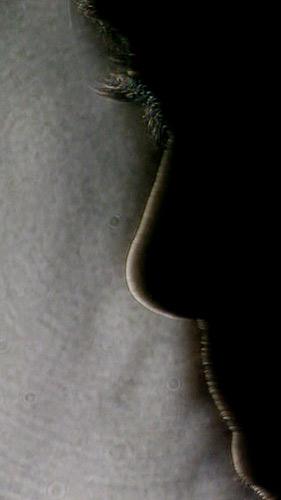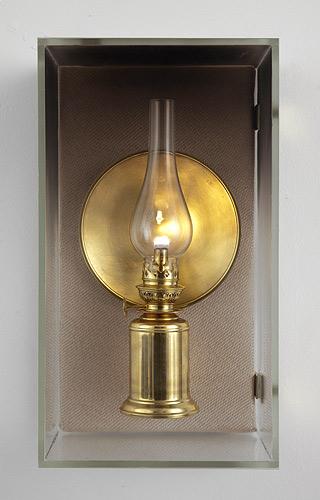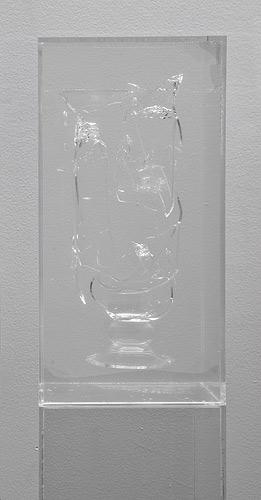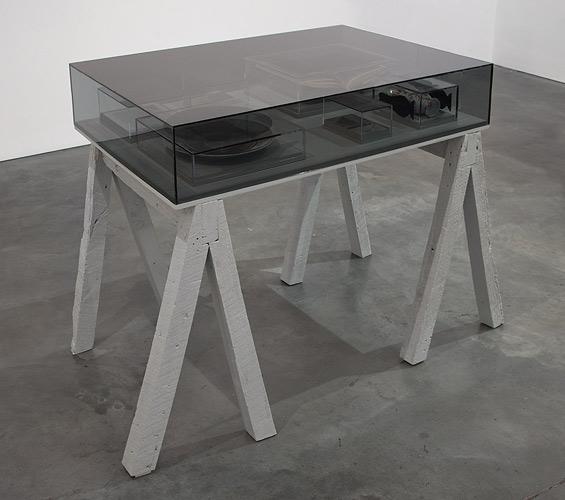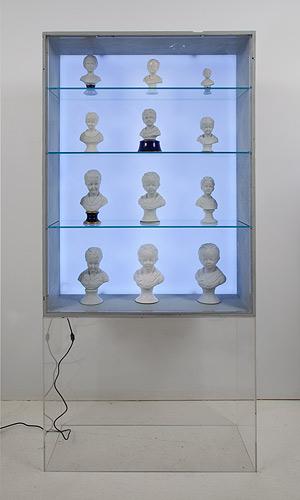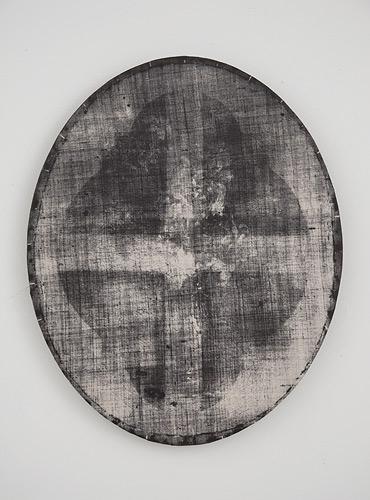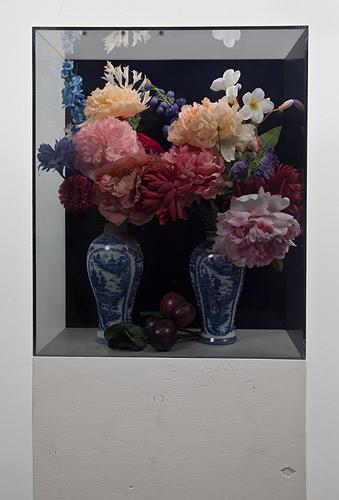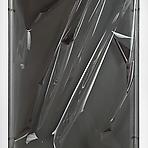Erik Wysocan
A Thousand & One Nights
March 18 – April 23, 2011
Gallery 2
2011
Andrea Rosen Gallery is proud to present Erik Wysocan's first solo exhibition in New York, A Thousand & One Nights in Gallery 2. It begins with a document entitled Titled 2011 that was prepared during the lead-up to the show and chronicles the lengthy process of locating Gunilla Weiss, the widow and collaborator to the late playwright Peter Weiss, and the correspondence that followed. Having referenced Peter Weiss' seminal work Marat/Sade as the structural model for this body of work, Wysocan asks Gunilla to recount the process of staging the play in 1963. Through this dialogue, Titled 2011 considers the uncertainty produced by the repeated resuscitation of history in Weiss's play—a mise en abyme first staged in 1963, set in 1808 and encapsulating an interior play taking place in 1793—and its radically politicized mediation of chronology.
From this textual platform, Wysocan has extrapolated a collection of objects that are presented within an arrangement of displays and support structures. Wysocan is interested in the material construction of history and the mechanisms which serve to define a historical narrative. The entrance is marked by a portal that is evocative of security devices often found at the transition between public space and prescribed space. Similarly, the sculpture generates a threshold between the gallery and the exhibition. Once inside, the exhibition framework stages artifacts and other objects assembled over the last year as part of an ongoing inquiry into the formal representation of the past.
Of one particular line of investigation, Wysocan writes that the display "is an object that images an object that images an object". In two works bearing the same title as the exhibition, 18th century blown-glass is captured at the moment of fracture, suspended within a crystalline medium. Two free standing display case works employ optical films to simultaneously efface the details of the objects beneath and generate iconic silhouettes—a process that can be seen as the delamination of the specificity of the object to reveal what embedded information might be maintained.
In the ongoing series (By Whom Will These Keepers Be Kept?), wall-mounted light boxes illuminate vivid topographies, encased in what seem to be smashed and then reconstructed vitrines. A sidelong view reveals a nearly empty space containing only crumpled cellophane. The resulting compositions are a product of the layering of surfaces without any substantive material support. They become representations of a fugitive reality not written in stone, but forever shifting, shimmering and transforming. The light boxes are accompanied by a series of wooden works that emulate the form of other pieces—described in the text Titled 2011 as performing the role of Weiss's stage properties.
A 1990's era German X-ray bag scanner near the entrance reveals a third line of inquiry. A device for monitoring the exchange of goods and people into a space, the X-ray scanner is an object that images an object that images an object. Nearby a TV displays the video feed captured from the X-ray machine, indexing many of the items that passed through Wysocan's studio over the last year; included are the artifacts displayed in, and comprising the other works in the exhibition, as well as everyday goods such as food and clothing. A second video piece makes use of the shadowgraph, an 18th century optical technique discovered by the pre-Revolution Jean Paul Marat to render the heat emanating from the breath of a unheard speaker.
As time passed, Wysocan repeatedly sought guidance from Gunilla Weiss in the development of these pieces, but with no apparent resolution. In the end, Titled 2011 chronicles the intermittent and then fading correspondence that developed between Gunilla and Erik over the course of several months. It concludes with a quote from Gunilla's final message before she cut off contact: "I just found out that I cannot find you…"
Erik Wysocan received an MFA from Columbia University in 2009. His work has been included in exhibitions at Sculpture Center, Long Island City, NY, and Socrates Sculpture Park, Long Island City, NY. Wysocan has also been included in group exhibitions at Andrea Rosen Gallery, Laurel Gitlen, New York, Museum 52, New York, and Brown Gallery, London.
For press information please contact Jessica Eckert, j.eckert@rosengallery.com or Renee Reyes, r.reyes@rosengallery.com
